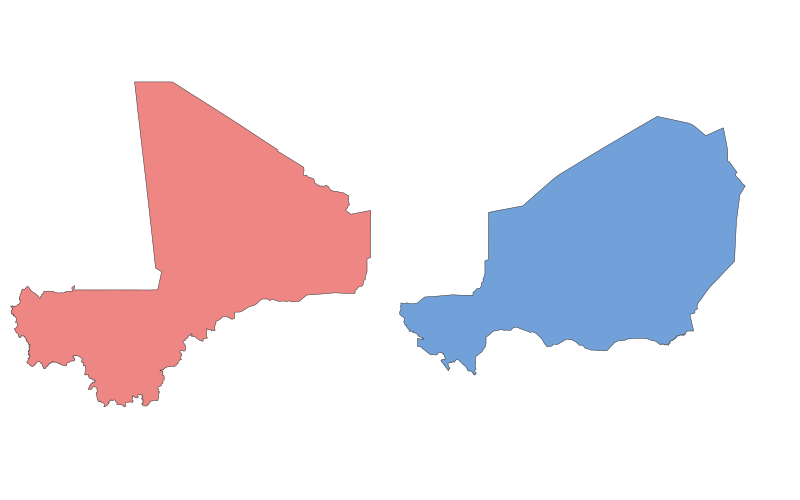Mali vs. Niger: A Geographical Comparison

Comparative Overview
| Category | Mali | Niger |
|---|---|---|
| Location | Landlocked in West Africa | Landlocked in West Africa |
| Size | 1,240,192 km² | 1,267,000 km² |
| Climate | Arid to semi-arid; hot and dry | Mostly desert; extreme heat |
| Natural Resources | Gold, phosphates, limestone | Uranium, coal, gold, oil |
| Urban Development | Bamako (capital) is the largest city | Niamey (capital) is the most developed |
| Transportation | Limited road infrastructure; Niger River for transport | Poor road networks; relies on neighboring ports |
Detailed Description
Mali
Mali, located in West Africa, is known for its rich history as part of the ancient Mali Empire, which thrived due to trans-Saharan trade. The country is predominantly Muslim, with diverse ethnic groups such as the Bambara, Tuareg, and Dogon. Mali's economy relies heavily on agriculture and mining, particularly gold, which is a major export. Despite its cultural wealth, Mali faces challenges like political instability and desertification.
Niger
Niger, also in West Africa, is one of the hottest and driest countries globally, with much of its territory covered by the Sahara Desert. It was historically part of several Sahelian kingdoms and is home to the Tuareg and Hausa peoples. Niger's economy depends on uranium mining, but it remains one of the world's poorest nations. The country struggles with food insecurity and rapid population growth, though it has made strides in democratic governance.
Both nations share similarities in climate and challenges but differ in economic focus and cultural dynamics.